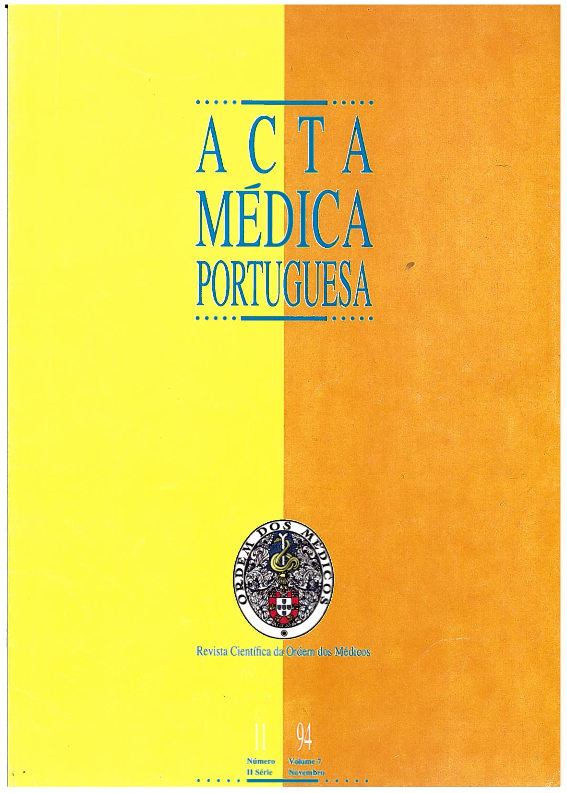Children and lead exposure. Preliminary study.
DOI:
https://doi.org/10.20344/amp.2985Abstract
Lead poisoning is one of the most common and preventable childhood illness. The authors believe that the present study is the first evaluation of this problem in Portugal. Objectives: a) to characterize blood lead levels in children aged 1 to 6 years living in the Oporto area; b) to identify risk groups and develop screening strategies. Material and methods: The authors studied an opportunistic sample of children that were observed at the Hospital Maria Pia and the Instituto Nacional de Saúde Dr. Ricardo Jorge (Porto) to whom blood testing was requested. All children with neurological or digestive symptoms were excluded (October-December 1991; n = 113). Results: One child had a blood lead level of 46.6 micrograms/dl (class-IV, CDC); 32% (n = 36) were between 20 e 44 micrograms/dl (class-III), while only four children (3.2%) presented values < = 9 micrograms/dl (class-I). Class II included the remainder (n = 73). The results clearly point out that lead poisoning is a real problem among Portuguese children, since the proportion of children not considered to be lead-poisoned is very small. Children in the other classes are at risk of developing acute and chronic toxicity.Downloads
Downloads
How to Cite
Issue
Section
License
All the articles published in the AMP are open access and comply with the requirements of funding agencies or academic institutions. The AMP is governed by the terms of the Creative Commons ‘Attribution – Non-Commercial Use - (CC-BY-NC)’ license, regarding the use by third parties.
It is the author’s responsibility to obtain approval for the reproduction of figures, tables, etc. from other publications.
Upon acceptance of an article for publication, the authors will be asked to complete the ICMJE “Copyright Liability and Copyright Sharing Statement “(http://www.actamedicaportuguesa.com/info/AMP-NormasPublicacao.pdf) and the “Declaration of Potential Conflicts of Interest” (http:// www.icmje.org/conflicts-of-interest). An e-mail will be sent to the corresponding author to acknowledge receipt of the manuscript.
After publication, the authors are authorised to make their articles available in repositories of their institutions of origin, as long as they always mention where they were published and according to the Creative Commons license.









